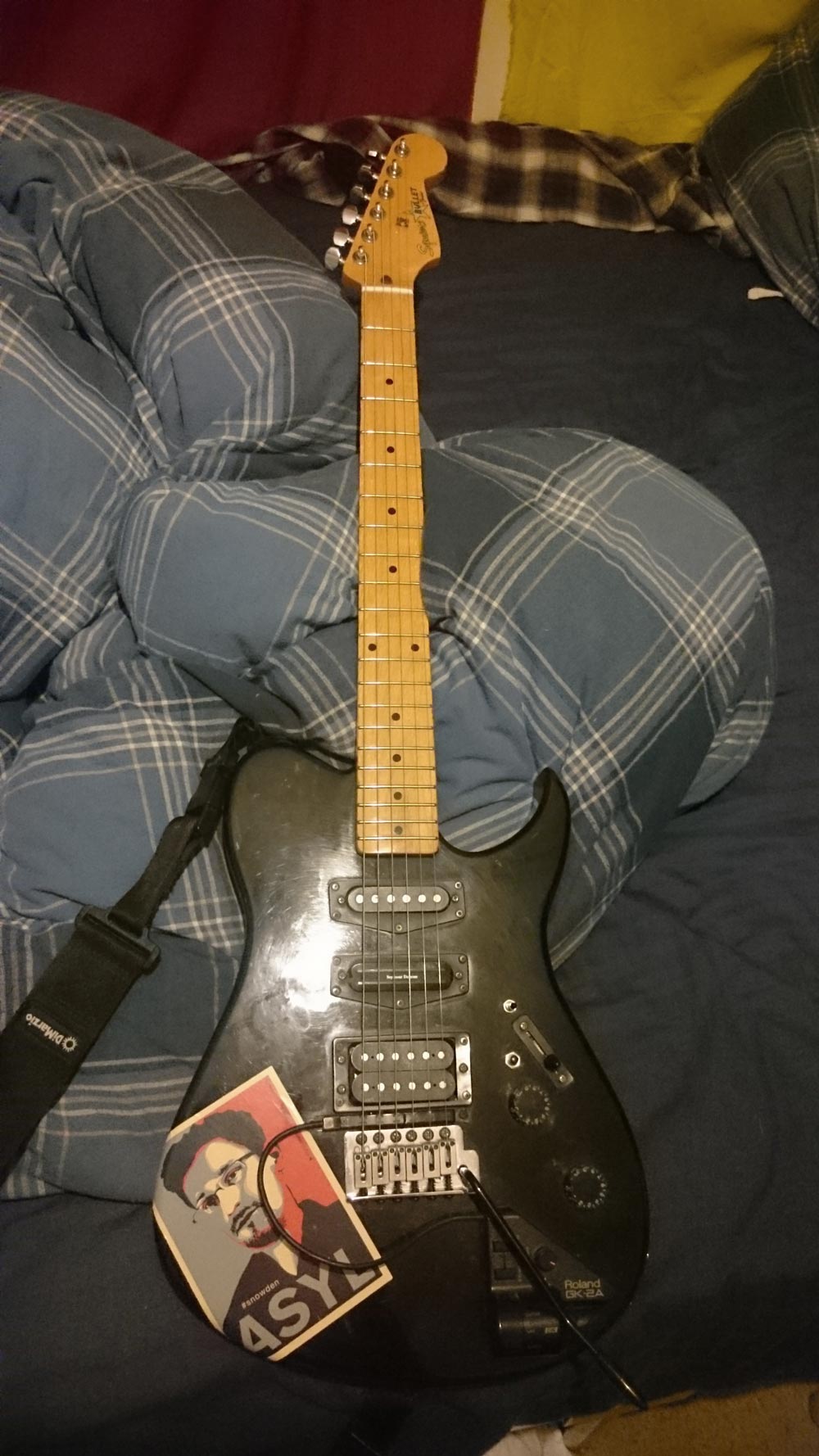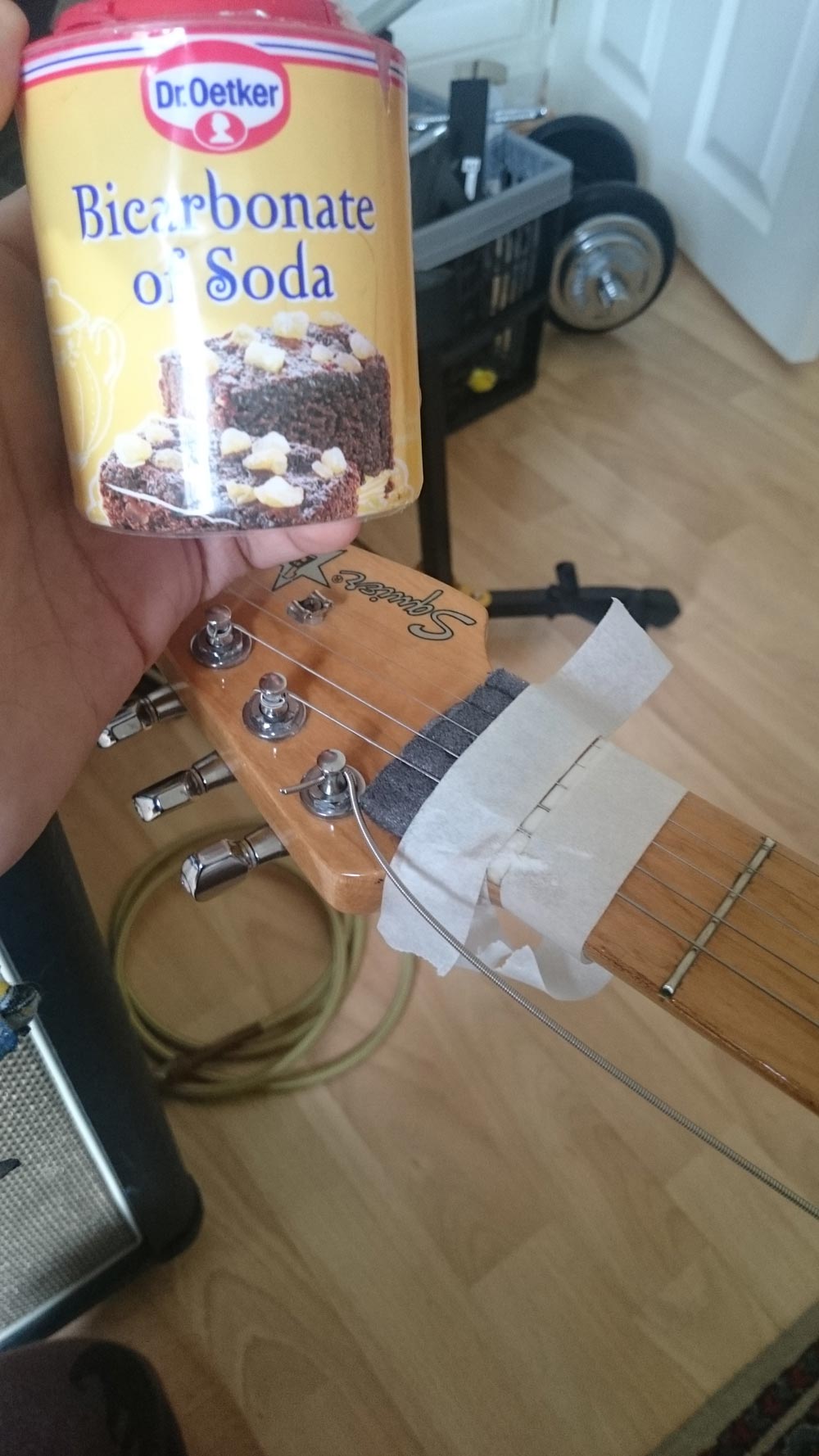Tuning a 6 String to Drop A and repairing a broken nut
I listened to quite a lot of The Safety Fire this summer, and was very interested by the slightly unusual tuning they used; a common drop tuning for a seven-string is Drop-A, where the strings go (low to high) AEADGBE, but TSF were approximating that on a 6 string using AADGBE, which employs a strange octave/unison tuning for the bottom two strings. I’ve mostly been writing in Drop-D for this last year, so decided to break some writer’s block that had crept up by trying out this tuning.
Easier said than done, as it turns out.
First off, the staff at the closest music shop to work didn’t really think it was possible, at least, not on a baritone or a bass VI. I knew it must be though, as the Wirebird Contour IV (be still, my beating heart) guitar that Dez and Jo use is a standard 25.5” scale length, which meant it was probably the string thickness that was tripping me up.
So home I scurried, clutching a pack of 7-string D’Addarios with a 60 on the lowest string. Immediately, I found that the cut in the nut was too thin to allow the string to settle and to be at a playable action and intonation, so I did what any self-respecting bodger would do, and filed it down (more on that later) to allow the action to fall within a reasonable height when the string was struck.
Except this now meant the string was too slack; after some stretching, it did at least settle to a consistent tuning, and you could kind of get a correct octave between the two strings at the twelfth fret, but it was not good. I had always assumed my pride-and-joy weirdo E series 85 MIJ Squier was a 25.5 but some time with a tape measure revealed that it was more like a Gibson 24 3/4 scale length, explaining to some degree the added pain I was having tuning so low.

Returning to the guitar shop revealed that they had no 8-string strings in stock, and my friend Andy who works for Roland and plays a baritone told me that the Ernie Ball set I’d heard about wasn’t produced any longer. There were plenty of reviews and videos on the internet that relied on heavier gauges, so I knew they must be out there.
In the end, shortly before stumping for a light bass string, I found that D’Addario do make a set of baritone strings, but not that many guitar shops seem to carry them. I ordered some online, and finally got my grubby mitts on a 72. After stringing up, stretching and tuning, it seemed like this was the one, but now I realised that the nut had been filed down too far, and the string was not correctly clearing the first fret. As an aside - the big jump in string gauge also meant raising the saddles and an intonation tweak, which I’ve also had since to revisit and adjust; I’d also expect a truss rod fiddle at some point, but I digress.
Some Googling presented a solution, and before long I was mixing Bicarbonate of Soda and Superglue with the end of a nail. Carefully taping up the nut and applying this gunk, then smoothing off the excess seemed like it wasn’t exactly rock solid, but twenty four hours later, when I gently filed the nut back down to a more conservative depth, the string was able to sit, and the action was restored to playable.
There’s quite a lot of buzz compared to a much lighter string, but the action itself is actually comfortable to play, the intonation is good enough that I’d be comfortable recording with it, and none of the buzz actually comes out of my amp, so who cares really? It’s an electric after all.
For the curious, an action shot of the repair:
Yes, it really does work. Long live AADGBE!


